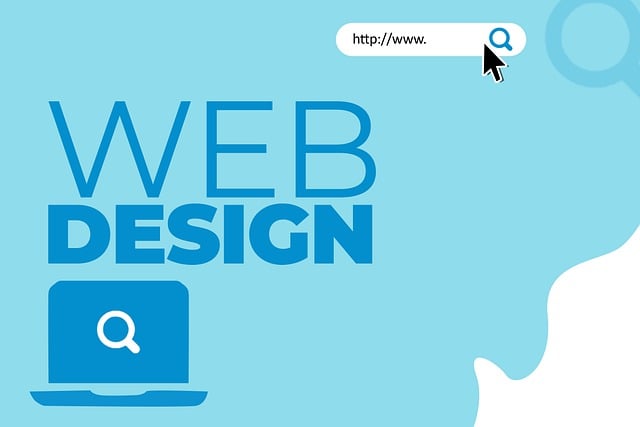Small businesses need a strong online presence, which full-service web design packages cater to by offering tailored solutions. These include user-friendly interfaces, mobile responsiveness, SEO optimization, and integrated marketing tools. By outsourcing this to experts, business owners can focus on growth while saving time and resources. A robust UX ensures engagement and conversions, with simplicity and SEO strategies driving long-term success in the digital landscape. Responsive design is crucial for mobile users, enhancing user satisfaction and SEO rankings. Analytics tools measure success, enabling data-driven improvements for a competitive online presence.
Small businesses need robust, user-friendly websites to thrive online. In today’s competitive market, full-service web design is crucial for achieving success. This article delves into the essential components of effective small business web design, highlighting the benefits of outsourcing to experts. We explore key strategies like search engine optimization (SEO), responsive design, and user experience – all vital for maximizing reach and conversions. By understanding your target audience and implementing proven tactics, you can elevate your online presence.
Understanding Small Business Needs in Web Design

Small businesses operate in a dynamic digital landscape where a strong online presence is crucial for success. However, navigating the complexities of web design can be challenging for owners with limited resources and expertise. That’s where full-service web design comes into play, offering a tailored solution to meet specific small business needs.
A comprehensive approach ensures that every aspect of a website is optimized for both aesthetic appeal and functional efficiency. This includes user-friendly interfaces, mobile responsiveness, search engine optimization (SEO), and integration of essential marketing tools. For small businesses, this translates into increased online visibility, improved customer engagement, and ultimately, boosted sales. By leveraging professional web design services, owners can focus on growing their operations while leaving the technical intricacies to experts.
Key Components of a Full-Service Web Design Package

A full-service web design package for small businesses encompasses several crucial components that work together to create a robust online presence. Firstly, it includes strategic consultation to understand the brand’s unique selling points and target audience. This phase involves detailed research and planning to ensure the final product aligns perfectly with the client’s goals.
The package also covers all aspects of design, development, and optimisation. Web designers craft visually appealing and user-friendly interfaces tailored to enhance user experience. They integrate responsive design principles to guarantee the website adapts seamlessly across various devices. Additionally, search engine optimisation (SEO) is a key element, ensuring the small business web design ranks higher on search engines like Google, thereby attracting organic traffic.
Benefits of Outsourcing to Experts for Small Businesses

Outsourcing full-service web design to experts can significantly benefit small businesses looking to establish a strong online presence. Professional designers bring specialized skills and industry knowledge, ensuring your website is not only aesthetically pleasing but also optimized for search engines. This strategy saves time and resources that would otherwise be spent on training in-house staff or continuously updating web design trends.
Expert designers can create a custom, responsive website tailored to your brand identity and target audience. They incorporate the latest technologies and best practices, resulting in improved user experience, faster loading times, and enhanced security. Furthermore, outsourcing allows small businesses to access a wider range of creative solutions and stay ahead of the competition in their respective niches, ultimately driving better engagement and conversions through effective small business web design.
The Impact of User Experience on Small Business Success Online

In today’s digital era, a robust user experience (UX) is paramount for small business success online. A well-designed website that seamlessly guides visitors through a clear and intuitive journey can significantly boost engagement, drive conversions, and foster customer loyalty. Small business web design should prioritize simplicity, ease of navigation, and fast loading times to ensure every visitor has a positive experience. By implementing these UX best practices, small businesses can create a strong online presence that not only attracts but also retains potential customers.
The impact of UX extends beyond initial impressions. A well-crafted user journey encourages visitors to explore products or services in detail, leading to increased trust and higher conversion rates. Moreover, positive UX contributes to better search engine optimization (SEO), as search engines favor websites that offer a seamless browsing experience. Ultimately, investing in small business web design that prioritizes UX is an investment in the long-term growth and viability of the business in the competitive online marketplace.
Strategies for Search Engine Optimization (SEO) in Small Business Websites

In the competitive digital landscape, effective Search Engine Optimization (SEO) is crucial for small business web design to stand out and attract customers. One key strategy involves optimizing website content with relevant keywords and phrases that potential clients might use when searching online. This includes targeting location-specific terms to boost local SEO, ensuring your site ranks higher in regional searches. Additionally, regular blog updates with informative content can significantly enhance search engine visibility, positioning your business as an authority in its niche.
Mobile optimization is another vital aspect. With a growing number of users accessing the internet via mobile devices, it’s essential for small business websites to be responsive and user-friendly on smartphones and tablets. This not only improves the user experience but also positively impacts SEO rankings. Implementing these strategies will help your small business website gain traction in search results, increasing web traffic and ultimately leading to more potential customers.
Incorporating Responsive Design for Maximum Reach

In today’s digital era, having a robust online presence is crucial for small businesses to reach and engage with their target audience. A key aspect of achieving this is through responsive web design. This approach ensures that the website seamlessly adapts to various devices, from desktops to tablets and smartphones. With over 50% of internet traffic coming from mobile phones, responsive design isn’t just a trend—it’s a necessity.
By implementing responsive design, small business web designers can provide an optimal user experience regardless of the screen size. This means improved loading times, easy navigation, and visually appealing layouts on all devices. Such adaptability not only enhances user satisfaction but also boosts search engine optimization (SEO) rankings, making it easier for potential customers to find and engage with small businesses online.
Measuring Success: Analytics and Continuous Improvement

Measuring success is a vital aspect of any web design project, especially for small businesses looking to make their mark online. Analytics tools play a crucial role in understanding user behavior and gauging the effectiveness of a website. By tracking key metrics such as page views, bounce rates, and conversion rates, business owners can gain valuable insights into what’s working and what needs improvement. This data-driven approach allows them to refine their digital strategy over time, ensuring their small business web design stays relevant and engaging.
Continuous improvement is key in the dynamic world of online marketing. Regularly reviewing analytics helps identify trends and areas where changes can be made to enhance user experience. Whether it’s optimizing content for search engines, improving site speed, or adding interactive elements, using analytics as a guide enables small businesses to stay competitive and provide a seamless digital journey for their customers in the ever-evolving landscape of small business web design.
